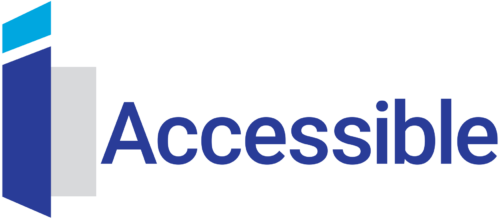Web Content Accessibility Guidelines (WCAG)
What is the Web Accessibility Guidelines (WCAG) conformance?
The World Wide Web Consortium (W3C) developed WCAG standards in collaboration with organizations and individuals around the world. In doing this, WCAG has become the global gold standard for web accessibility, with leading countries around the world assigning WCAG 2.0 AA as the legal standard into their legislations.
To achieve these standards, WCAG references four principles: Perceivable, Operable, Understandable, Robust. Each principle has its own subcategories, but the guiding directions are:
- Perceivable: Information and user interface components must be presentable to users in ways they can perceive. This includes alt texts for images, use of colors contrast, audio control, closed captions, etc.
- Operable: User interface components and navigation must be operable. This includes ensuring the page is completely functional through use of the keyboard, three flash thresholds, layout, etc.
- Understandable: Information and the operation of the User interface must be understandable. This includes the web page operating in a predictable way, error suggestions and prevention, etc.
- Robust: Content must be robust enough that it can be interpreted reliably by a wide variety of user agents, including assistive technologies. This includes making proper markup language formatting unique ID’s, etc.
There are three conformance levels to WCAG: A, AA, and AAA. The concept of these levels is that they build on each other, making it more design demanding to meet the next level. For instance, a component within WCAG is Distinguishable. The thee levels of distinguishable regarding color are described as follows:
- Level A: Color is not used as the sole visual means of conveying information, indicating an action, prompting a response, or distinguishing a visual element. An example of this level’s significance would be a person with deuteranomaly, which is red-green color blind. If stop and go action elements were represented by these colors, a user would not be able to decipher the intended use of the action element.
- Level AA: The visual presentation of text and images of text has a contrast ratio of at least 4.5:1 for normal text and 3:1 for larger text, and 3:1 for graphic and user interface components.
- Level AAA: Visual presentation of text and images of text has a contrast ratio of at least 7:1.
As you can see, increasing levels produce increased challenges for the web designer. However, as per the W3C, “It is not recommended that Level AAA conformance be required as the general policy for entire sites because it is not possible to satisfy all Level AAA Success Criteria for some content.” It is on this recommendation that legislators are implementing Level AA as the legal Standard, and what iAccessible aims to comply to.
Why WCAG matters:
WCAG is important because it states a standard, whereas the Americans with Disabilities Act (ADA) only states that there cannot be discrimination among this with disabilities. By striving to ensure your website meets WCAG standards, your can increase your target audience, create a better user experience for all, and can even improve search results as alternative text and closed captions are searchable through search engines.
How iAccessible can help you?
The principles and subcategories in WCAG are inherently structured and format centric, and therefore testable. We at iAccessible understand this and have taken the time to develop a product that will automatically scan your webpages, identifying compliance issues against WCAG standards. iAccessible will then report these violations to you a manner that allows you to easily locate and remediate reported violations. Through iAccessible, you will be able to save time and money while minimizing legal risks, all while supporting the greater cause of providing equal opportunity and web accessibility to all.
